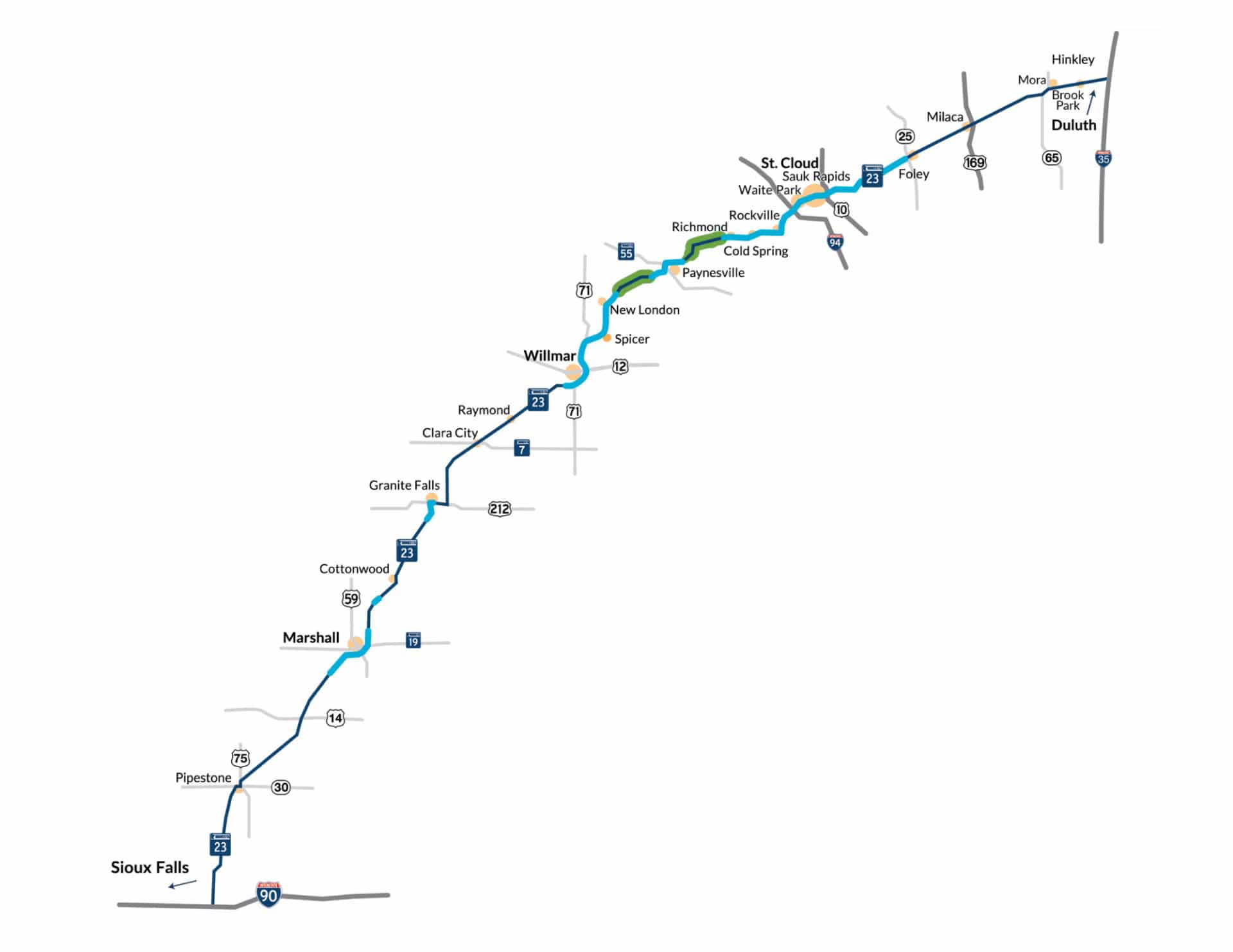Our Mission
4-Lane Highway from I-90 to I-35, enhancing safety, mobility, and economic growth
The purpose of the Coalition is to operate a nonprofit organization whereby members may cooperatively plan for and maximize opportunities for infrastructure improvements along the Highway 23 Corridor in a public-private partnership manner.

Why Four Lanes?
Highway 23 is the second longest state route in Minnesota traveling from the South Dakota border to Duluth and, yet, the majority of the route remains a two-lane highway. The Highway 23 Coalition focuses on the corridor from Marshall to I-90, advocating for a four-lane connection from Willmar to I-94. The Coalition believes this improvement is essential to west central Minnesota’s economy and workforce. In this six-county region alone, more than 1,138 transportation-related businesses with 30,000 employees will directly benefit from this highway modification. Accessibility is required to attract and retain manufacturing jobs, businesses and skilled employees.
Support the Hwy 23 Coalition’s push for a 4-lane highway from I-90 to I-35, enhancing safety, mobility, and economic growth
2025 Priority Projects
Yet the Coalition's quest for highway improvements does not end here. On the Coalition's radar are a four-lane feasibility study between Foley and I-35, four-lane feasibility study between Granite Falls and Marshall and 4-lane extension from Highway 71 to Kandiyohi County Road 5.
Our History

For many years, an informal Highway 23 Coalition has been seeking state funding to complete the two four-lane gaps between Willmar and I-94. In the summer of 2017, the Highway 23 Coalition was formally organized to unite communities and businesses along the corridor from Rock County to Pine County — encompassing the Marshall, Willmar, and St. Cloud regions—to promote highway improvements along the corridor.
How We Work

The Coalition is run by a board of directors consisting of eleven individuals. Annually the Coalition adopts a budget with the majority of the revenues coming from membership dues from units of government, businesses, and organizations.
Our board and its members work towards change through advocating for the funding, construction and completion of the four-lane gaps throughout the Hwy 23 Corridor; the funding, construction and completion of other safety improvements and reduced conflict intersections along the corridor; and being a model for regional cooperation that can be used elsewhere in Minnesota.



